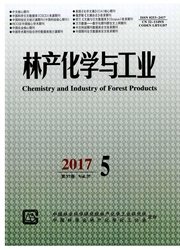

 中文摘要:
中文摘要:
采用东北杨木屑为原料,在固定床二级催化裂解反应器上,试验了不同产地白云石催化作用下的焦油催化裂解过程,并对裂解温度和催化剂类型、反应停留时间等参数对焦油转化效果和热解可燃气的影响进行了分析。实验结果表明:裂解温度越高、停留时间越长、焦油的裂解效果越好,裂解温度达到1000℃时,焦油的催化裂解率达到98.99%,不同产地白云石的催化裂解效果是有明显差异的,陕西产白云石在裂解温度900℃时裂解率达到95.14%。决定白云石催化裂解效果优劣的最重要的因素是白云石煅烧处理后比表面积的大小,比表面积越大,催化效果越好。要想得到好的焦油裂解效果,须选择高比表面积的白云石。
 英文摘要:
英文摘要:
Main raw material is poplar sawdust. Catalytic cracking of tar is performed in a secondary fixed-bed cracking reactor using four types of dolomite as catalyst. Operation parameters like cracking temperature, catalyst type and residence time of reaction are investigated for their influences on tar cracking and gas quality. The characters of catalysts from different areas are measured in order to seek for suitable catalyst for commercial utilization in gasification systems. The results show that higher cracking temperature and longer residence time are favourable to tar cracking. When pyrolysis temperature goes beyond 1 000 ℃, the tar cracking rate can reach 98.99 %. Dolomites from different places show obvious difference in their catalysis effect. The dolomite from Shaanxi calcined at 900 ℃ can have tar cracking rate up to 95.14 %. The most important factor that determines cracking effect of dolomites is their specific surface area after calcination. The bigger the specific surface area the better is catalysis effect. In order to obtain high catalysis effect, dolomite with bigger specific surface area should be chosen.
 同期刊论文项目
同期刊论文项目
 同项目期刊论文
同项目期刊论文
 期刊信息
期刊信息
